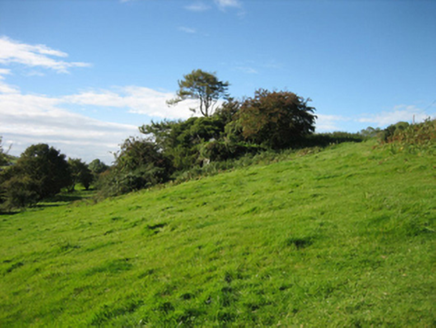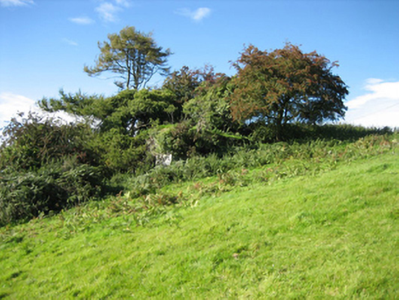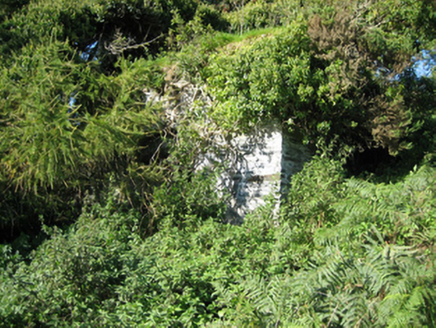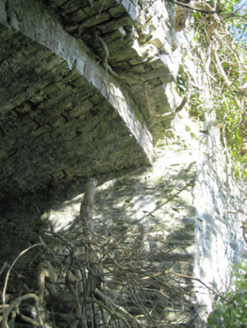Survey Data
Reg No
40906210
Rating
Regional
Categories of Special Interest
Social, Technical
Original Use
Kiln
Date
1800 - 1840
Coordinates
231378, 409138
Date Recorded
04/10/2010
Date Updated
--/--/--
Description
Freestanding single-bay lime kiln on square-plan, erected c. 1820. Tapers outwards towards base. Now out of use. Constructed of roughly coursed rubble stone masonry. Segmental-headed opening to front (north), the former oven aperture, having roughly dressed and squared rubble stone voussoirs over. Former loading chamber on ovoid/circular-plan to the south having rubble masonry construction. Built into rock outcrop adjacent to road and former quarries. Earthen embankment to rear, formerly giving access to loading chamber. Set back from road in the rural countryside to the south-west\west of Saint Johnstown.
Appraisal
This interesting former lime kiln, probably erected during the first half of the nineteenth century, survives in relatively good condition and retains its early character. It is well-built using local rubble stone masonry and is an appealing and unassuming element of the agricultural/industrial and social heritage of County Donegal. The curved detailing to the oven opening aperture is an interesting feature. The embankment to the rear was built/modified to allow for the easy loading of stone through an opening in the roof structure, while the aperture to the front was used to fire the oven to burn the stone and produce lime. Lime kilns appear to have come into popular use in Ireland during the eighteenth century and were a very common feature in the rural landscape up until the first decades of the twentieth century. They were used to burn limestone to produce lime, which was used as an agricultural fertilizer and spread on agricultural land, or in construction as a mortar and a render. Lime was also used for lime-washing buildings, particularly farm buildings, as it was regarded as a cleansing agent at the time. This small-scale kiln was probably in use by a local farmer and probably provided lime to small farmers etc. in the immediate environs. Small rural lime kilns started to go out of common usage during the late nineteenth-century with the advent of industrial-scale lime production facilities and improvements in the transport network, particularly the development of the railways. This lime kiln, or an earlier one to site, is depicted on the Ordnance Survey first edition six-inch map of c. 1836; it is indicated as ‘out of use’ by c. 1905 (Ordnance Survey twenty-five inch map). This simple feature is an interesting feature in the landscape to the south-west\west of Saint Johnstown, and is an integral element of the built heritage of the local area.







